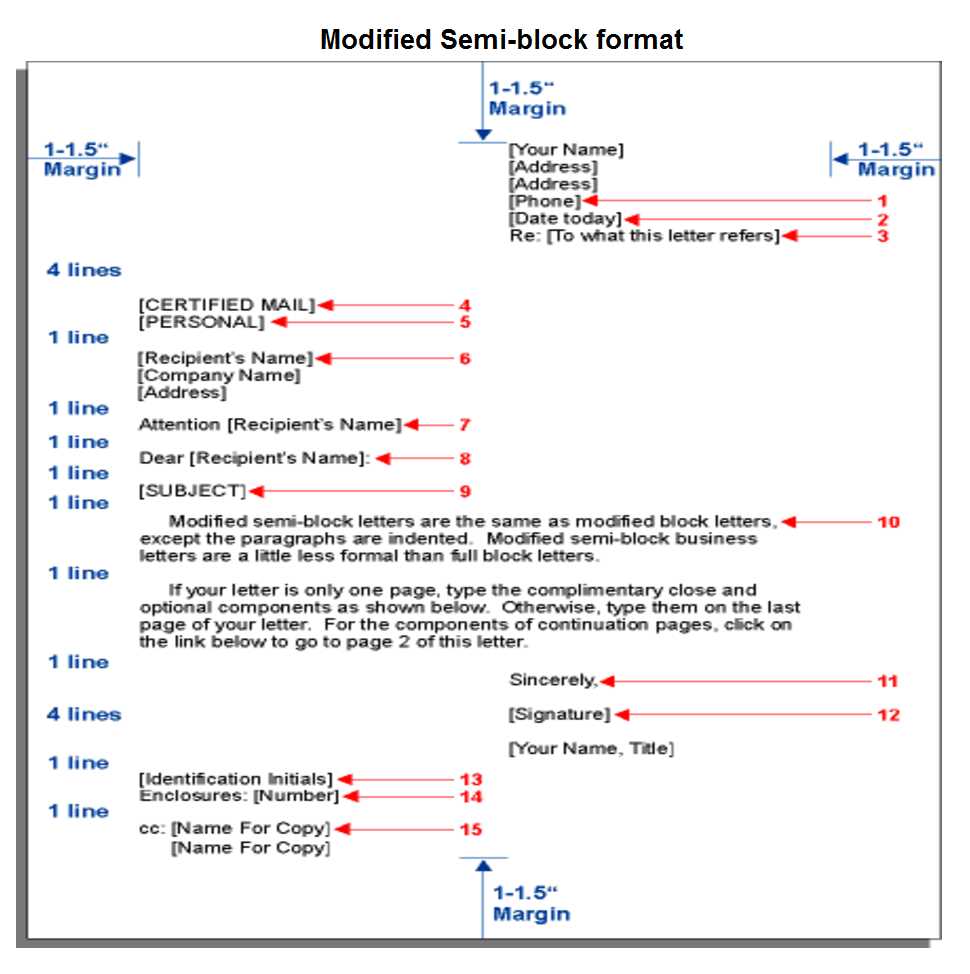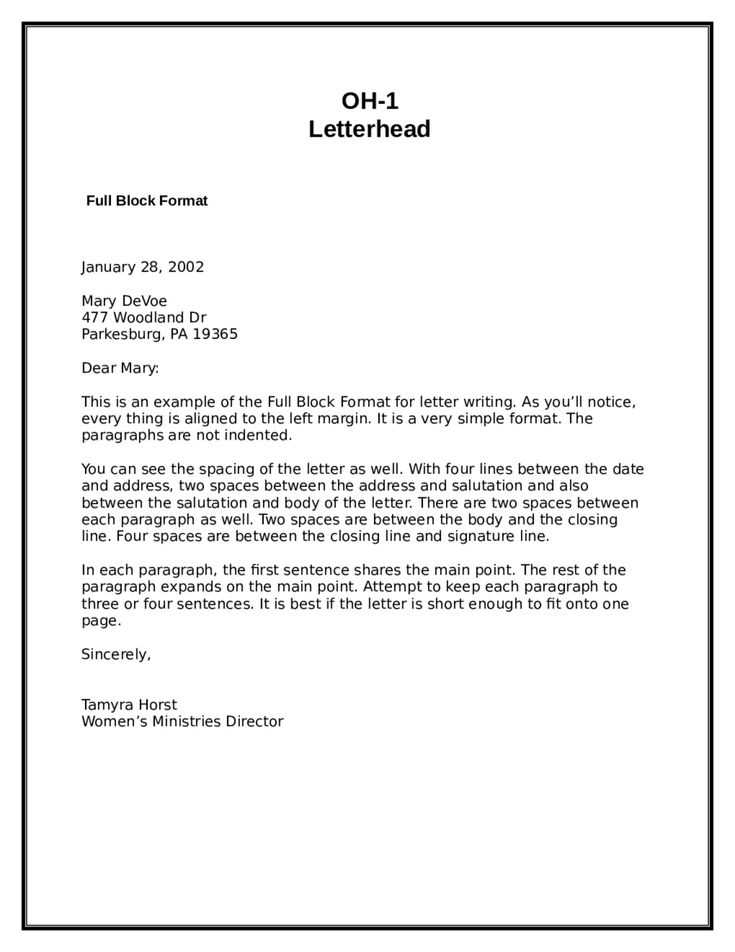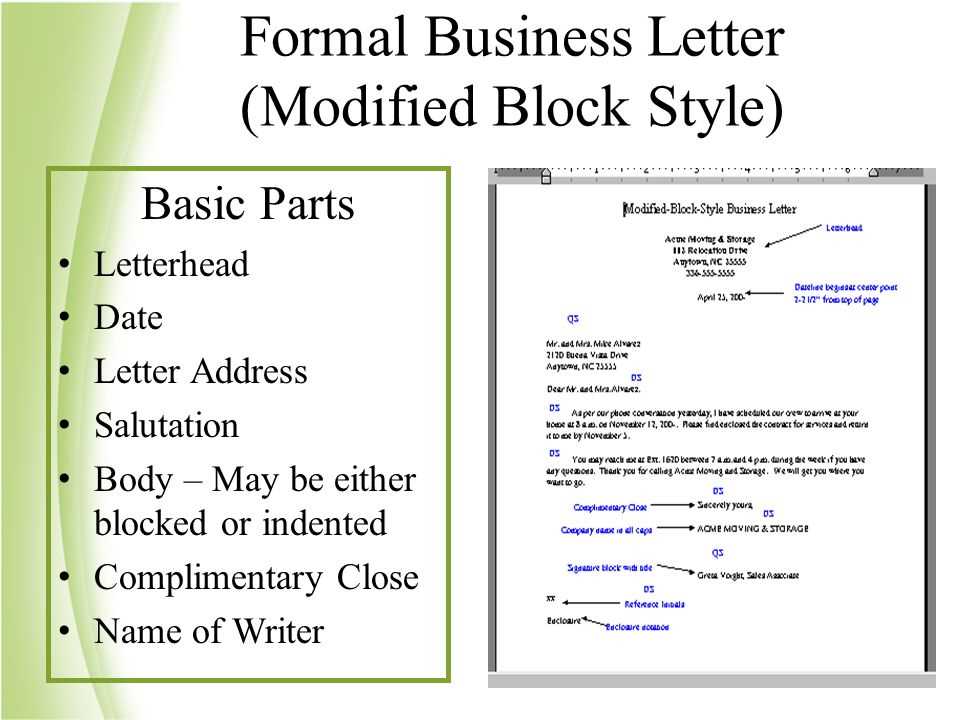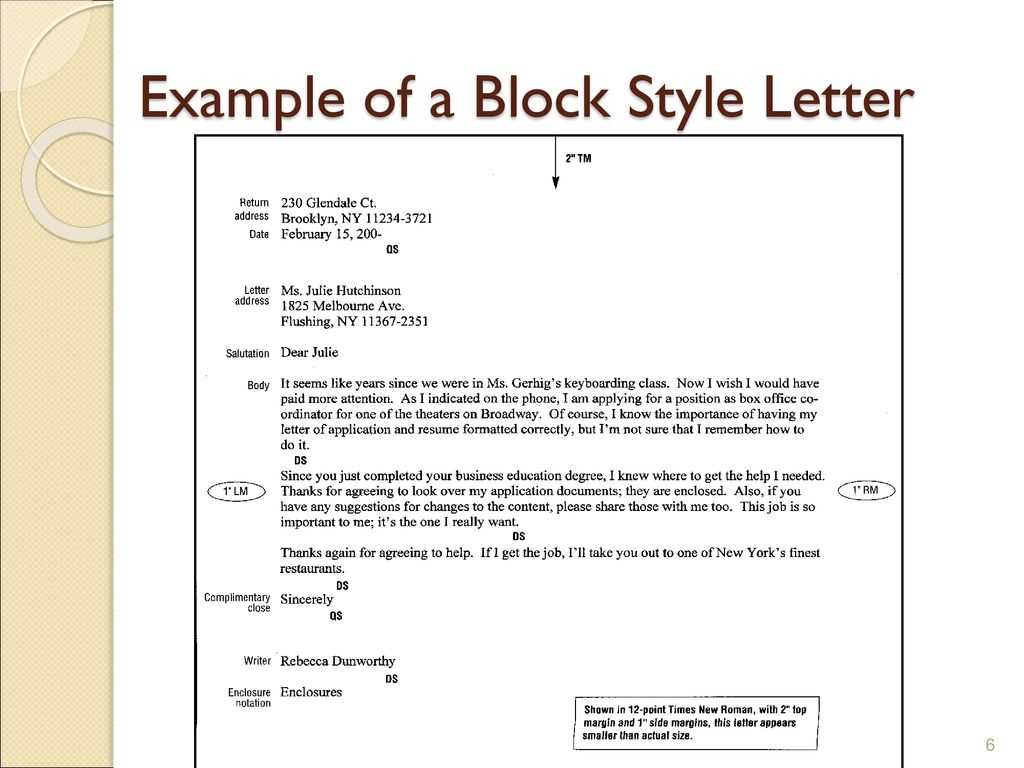Block Style Business Letter Template Guide

Creating well-organized and formal documents is essential in professional communication. A clear and concise layout ensures that your message is delivered effectively, without unnecessary distractions. Proper formatting not only conveys professionalism but also enhances the readability of your content.
When drafting official letters, there are various approaches to consider, each with its own set of rules and guidelines. A particular format stands out for its simplicity and ease of use, providing a straightforward way to structure your communication.
Understanding the key principles behind this format allows you to create polished, structured messages that reflect your attention to detail. Whether you are addressing clients, partners, or colleagues, using an appropriate framework for your documents demonstrates respect and clarity.
Understanding Formal Document Formatting

When preparing formal correspondence, choosing the right structure is crucial for clear communication. A well-organized format helps present information logically, ensuring that key points are easy to identify and understand. This approach eliminates confusion and presents your message in a polished, professional manner.
Key Features of This Format

The core elements of this format include a structured layout where every section is aligned consistently. This design ensures a clean appearance and makes it easier for the reader to follow the content. Some of the most important components include:
- Sender’s address at the top
- Recipient’s address next, clearly separated
- Salutation or greeting with appropriate spacing
- The body of the content, neatly aligned
- Closing remarks followed by a signature
Benefits of Using This Format
This approach offers several advantages, making it popular for formal communication:
- Clarity: The simple layout makes it easy to read and follow.
- Consistency: It ensures uniformity in all communications, enhancing professionalism.
- Efficiency: The clean presentation allows the reader to quickly identify important details.
Essential Components of Formal Correspondence

Effective professional communication relies on key structural elements that help convey information clearly. Each section plays a role in ensuring the message is delivered efficiently and with the right tone. Understanding these critical parts is essential for crafting effective documents that serve their purpose well.
Primary Elements of the Document
A well-organized formal communication typically includes the following sections:
- Sender’s Information: This includes your name, title, and contact details, usually placed at the top of the page.
- Recipient’s Information: The name, title, and address of the recipient are clearly stated below the sender’s details.
- Salutation: A greeting such as “Dear [Name]” or “To whom it may concern,” setting the tone for the correspondence.
- Body: The main section where the message is communicated, typically divided into paragraphs for clarity.
- Closing: A polite sign-off, such as “Sincerely,” followed by a space for your signature and printed name.
Organizing Content for Impact
Properly structuring the sections of your document is crucial for its effectiveness. Each part should be formatted neatly, with sufficient spacing and clear breaks between sections. This helps readers quickly find the information they need and improves the overall readability of the document.
How to Structure a Formal Document
Creating a well-organized formal communication requires careful attention to detail. The format ensures clarity and helps guide the reader through the content in a logical order. By following a structured approach, your message will appear professional and easy to follow.
Key Sections of a Formal Communication
Each formal document consists of several essential components that must be arranged in a clear and precise way. Below is a table summarizing these key sections and their placement:
| Section | Description |
|---|---|
| Sender’s Information | Placed at the top of the document, includes the name, address, and contact details of the sender. |
| Recipient’s Information | Located below the sender’s information, detailing the recipient’s name, address, and title. |
| Salutation | A respectful greeting to the recipient, such as “Dear [Name].” |
| Body | The main content of the communication, typically broken into paragraphs for clarity. |
| Closing | The polite conclusion of the message, such as “Sincerely,” followed by the sender’s name. |
Arranging the Content Effectively
Once all sections are identified, the next step is to arrange them in a logical flow. Proper spacing between each component ensures that the document is easy to read and visually appealing. Organizing the content correctly allows the recipient to quickly identify important details and understand the purpose of the communication.
Why Choose This Format for Professional Communication
Opting for a particular format when creating official correspondence offers several advantages that contribute to its effectiveness and readability. A clean, uniform structure helps ensure that your message is communicated clearly and professionally. This format is especially useful when seeking to convey information in a straightforward, easy-to-understand manner.
One of the main reasons to choose this approach is its simplicity. It eliminates unnecessary clutter, making the document easy to navigate. By keeping the content organized and streamlined, the recipient can quickly locate key points, which improves both efficiency and understanding.
Moreover, using a well-recognized format enhances professionalism. It reflects attention to detail and adherence to established standards, which can leave a positive impression on the recipient. A clean and consistent design also adds to the overall credibility of the communication, making it more likely to be taken seriously.
Common Errors to Avoid in Formatting
Proper formatting is crucial for ensuring that professional documents are clear and easy to read. However, certain mistakes can undermine the effectiveness of the communication, making it appear unorganized or unprofessional. It’s important to be aware of these common errors so that they can be avoided.
One frequent mistake is improper alignment. It’s essential to maintain consistent alignment throughout the document, ensuring that all text is properly aligned to the left margin. Inconsistent spacing between sections can also disrupt the flow, making it harder for the reader to follow the content smoothly. Be sure to use adequate space between paragraphs and headings to maintain clarity.
Another error involves using incorrect font styles or sizes. It’s important to choose a professional font and stick to it throughout the document. Mixing different fonts or using fonts that are difficult to read can detract from the document’s overall presentation. Additionally, avoid excessive use of bold or italics, as this can make the text appear cluttered.
Finally, neglecting to include all necessary sections, such as the sender’s information or a proper closing, can make the document feel incomplete. These are essential elements that add structure and formality to the communication. Ensure every part is in place to maintain a well-rounded and professional appearance.
Professional Examples of Formal Correspondence
To better understand how to craft effective professional communications, it’s helpful to look at a few examples. Real-world samples can provide insight into how different elements are arranged and formatted, making it easier to follow a successful structure when drafting your own messages.
For instance, a well-written cover letter or introduction for a job application typically follows a formal structure. It begins with the sender’s contact information at the top, followed by a respectful greeting, the main body of the content detailing the purpose, and a closing that reinforces professionalism. Each part is designed to build a cohesive message that is clear and concise.
Similarly, a formal request or inquiry is often written with a direct approach. The opening paragraph briefly introduces the reason for the communication, followed by any necessary details, and ends with a polite request for action or response. In this type of correspondence, the tone is critical, as it reflects respect for the recipient’s time and attention.
Example 1: Formal Inquiry
Dear Mr. Smith,
I hope this message finds you well. I am writing to inquire about the upcoming product launch, as I am very interested in learning more about the details and how we can collaborate moving forward.
Example 2: Job Application
Dear Ms. Johnson,
I am writing to express my interest in the marketing position at your company. With extensive experience in digital campaigns, I believe I could contribute to your team’s growth and success.
Best Practices for Letter Presentation
When preparing formal written communications, presentation plays a crucial role in ensuring the message is received with professionalism and clarity. Proper formatting and careful attention to detail can significantly enhance the effectiveness of your correspondence.
Here are some best practices to follow:
- Maintain Consistent Margins: Ensure that all sides of the document have even margins. Typically, one-inch margins on all sides create a neat and organized appearance.
- Use a Clear, Professional Font: Choose a simple, readable font such as Arial or Times New Roman in a standard size (usually 12-point). Avoid decorative or difficult-to-read fonts.
- Align Text Appropriately: Ensure the text is aligned correctly and evenly spaced. Left alignment is generally preferred for the body, with proper spacing between paragraphs.
- Proofread for Errors: Carefully review the document for any spelling or grammatical mistakes. A well-written message reflects positively on your professionalism.
By following these guidelines, your communication will appear organized, clear, and professional, creating a positive impression with the recipient.